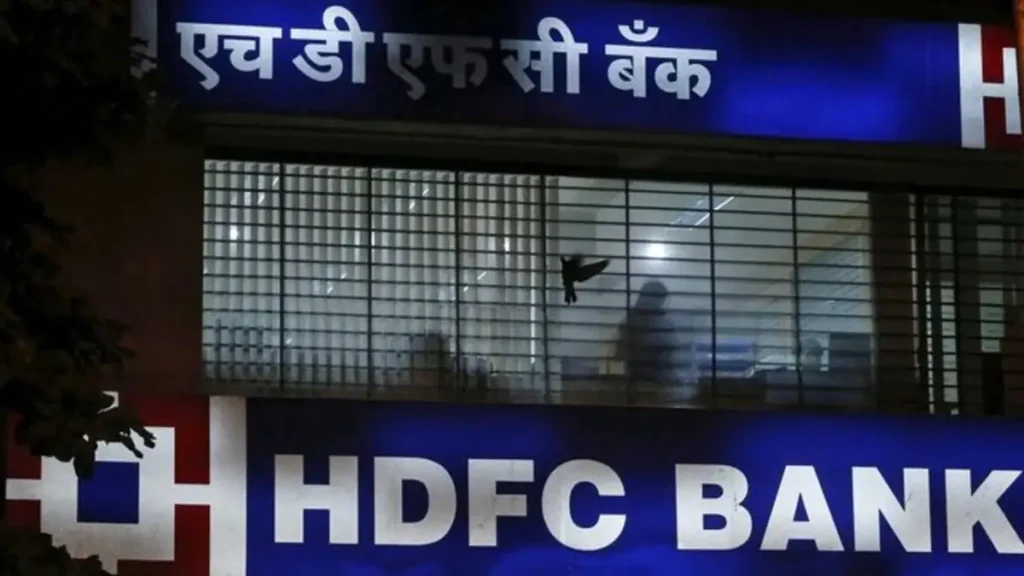HDFC Bank Crosses ₹15 Trillion Market Cap: Is It Time to Invest or Exit?

HDFC Bank has made headlines once again, this time by crossing the ₹15 trillion mark in market capitalization for the first time in its history. The stock surged to a new high on the Bombay Stock Exchange (BSE) on Tuesday, gaining an impressive 12% over the past six trading days. This notable rally has sparked fresh interest among investors, raising the key question: Should you ride the momentum or book your profits?
A Strong Quarter Lifts Confidence
The surge in HDFC Bank’s share price is backed by solid quarterly results. For the fourth quarter of FY25, the bank reported healthy growth in its loan book, with standalone net advances increasing to ₹26.2 trillion. This marks a 5% year-on-year rise and a 4% jump from the previous quarter. The growth was primarily driven by strong performance in the retail and commercial & rural banking (CRB) segments.
In addition, the bank’s core income from lending, or net interest income (NII), grew by 10.3% over the same quarter last year. Profitability margins also improved slightly, with net interest margin (NIM) rising by 11 basis points to reach 3.54%. These gains suggest that HDFC Bank is managing to grow its business while maintaining profitability, despite a competitive lending environment.
Asset Quality on a Solid Footing
One of the highlights of the Q4FY25 results was the continued improvement in asset quality — a crucial metric in banking. Gross non-performing assets (NPAs) stood at 1.33%, down 9 basis points from the previous quarter, while net NPAs came in at 0.43%, a 3 basis point improvement. This trend reflects the bank’s strong risk management framework and disciplined lending practices.
The bank’s leadership also expressed confidence in future growth, aided by better systemic liquidity. This improved liquidity environment is expected to support stronger deposit mobilization, which in turn will allow for more lending in the quarters ahead.
That said, the bank expects that its credit-deposit (CD) ratio — currently still adjusting post-merger — may not return to the pre-merger levels of 85–90% until FY27. This suggests a gradual path back to optimal loan-to-deposit efficiency as the merged entity fully stabilizes.
Analysts Weigh In: Near-Term Challenges, Long-Term Promise
Market analysts remain cautiously optimistic about HDFC Bank’s outlook. According to JM Financial Institutional Securities, the upcoming rate cut cycle could put pressure on margins. This is because deposits tend to be repriced slower than loans, leading to a short-term squeeze in profitability.
Still, there are multiple positives to consider. The bank is gradually lowering its reliance on borrowings, reviving its loan growth, and maintaining excellent credit quality — all of which should support consistent returns. JM Financial expects the bank to post return on assets (RoA) of around 1.7% and return on equity (RoE) of 14% over FY26–27, reinforcing its position as a high-quality franchise.
A steady uptick in lending activity, coupled with stable asset performance and careful cost management, is likely to influence the bank’s valuation positively over the medium term.
HDFC Bank: Built for the Long Haul
HDFC Bank has long stood out for its consistent financial performance, efficient operations, and strong governance. Even after the large-scale merger with HDFC Ltd, the bank continues to demonstrate its resilience. Now the second-largest lender in India by size, it commands a broad and diversified asset base, giving it a solid foundation for sustained growth.
Its long-standing reputation for maintaining healthy return ratios has also supported its premium valuation in the market. While the merger created temporary challenges, it also opened up new opportunities, especially in cross-selling and expanding the customer base.
With a diversified loan portfolio spanning retail, SME, and rural segments, HDFC Bank is well-placed to benefit from India’s growing demand for credit in both urban and semi-urban areas.
What Should Investors Do Now?
So, is this a buying opportunity — or is the stock looking overvalued after such a sharp rise?
For Long-Term Investors:
If you’re investing with a multi-year perspective, HDFC Bank remains a compelling option. The stock’s recent rally is supported by underlying strength in business fundamentals. With strong earnings, improving margins, and low levels of bad loans, the bank appears well-equipped for long-term value creation. Investors who believe in the India growth story may find HDFC Bank to be a stable pillar in their portfolio.
For Short-Term Traders:
If you’ve enjoyed the recent gains, it might be worth locking in profits — at least partially. A 12% surge in just six sessions could be followed by some consolidation or minor corrections. In the short term, margin pressure and global macroeconomic factors could create volatility. Traders should also watch the impact of central bank policies and interest rate changes in the coming months.
Final Thoughts
Crossing the ₹15 trillion market cap mark is a big achievement, even for a bank of HDFC’s stature. It underscores investor confidence, strong fundamentals, and a consistent growth trajectory. While short-term headwinds such as margin compression and post-merger adjustments may remain, the long-term outlook continues to be favorable.
For those looking to invest in a reliable and fundamentally strong private sector bank, HDFC Bank still checks many of the right boxes. However, as with any investment, timing and strategy depend on your goals and risk tolerance.






